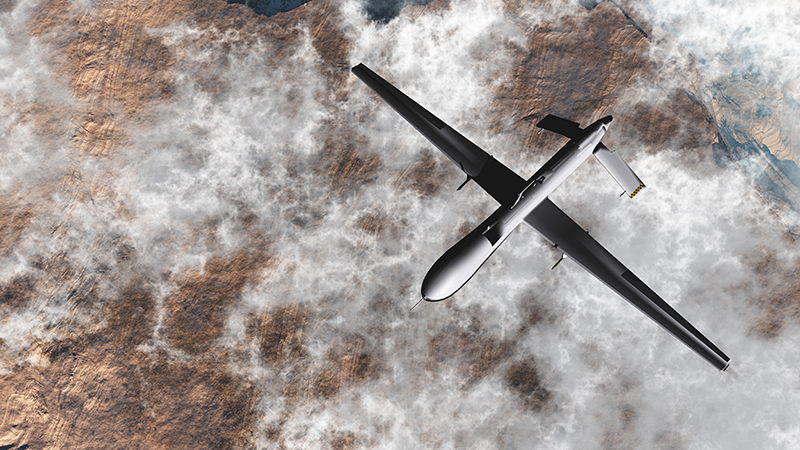By Darius McDermott, managing director of FundCalibre
Keir Starmer had only just walked through the door of 10 Downing Street when pressure started on defence spending: when would he push spending to 2.5% of GDP? He has announced a ‘root and branch’ review of the sector, but higher defence spending seems an inevitability at a time when the UK is facing multiple international threats.
It is a dilemma facing all European governments as they contemplate a febrile geopolitical landscape. JPMorgan Chase CEO Jamie Dimon wrote in a second-quarter earnings release that the “geopolitical situation remains complex and potentially the most dangerous since World War II”.
The tensions are emerging on a range of fronts – the Ukraine and Russia conflict remains the most troubling for European governments because of its proximity, but the war between Israel and Hamas is also having an impact on domestic politics, as seen in the UK election, and could also destabilise the Middle East more widely, with implications for the oil price. China has long been a threat, as it aligns itself with Russia and Iran.
From November, there is the prospect of Donald Trump returning to the White House, although there has been some Democratic revival under Kamala Harris. In his wilder moments, Trump has proposed tariffs of 10% on all goods imported, plus 60% on China and up to 200% on Mexican autos.
See also: Crisis point: Concerns grow over mounting government debt levels
While these are likely to be a starting point for negotiation, it is unlikely to make for harmonious international relations. Trump’s running mate, JD Vance, is known to be hostile to spending on Ukraine and it is becoming clear that Europe may need to raise its defence spending to counter any reluctance from the US.
Alec Cutler, manager of the Orbis Global Balanced fund, says that for governments it means the end of the peace dividend that allowed them to drop spending on defence over the past 30 years. He adds: “The New Cold War coming out of the 1989-2022 peace dividend era, that’s now done, I think that’s increasingly understood by the market. Those defence names have appreciated as a result.”
It now seems inevitable that defence spending will rise from here. Oxford Economics says this can be accommodated even within the tight budgets of most European governments: “Although defence spending is likely to rise from here, it is still a relatively low budget item (around 1% of GDP in most European economies) and thus is unlikely to cause disruptions.”
The defence sector has had a strong run of performance as investors have sought to defend their portfolios against geopolitical conflict. The MSCI World Aerospace and Defense index is up 27.3% over the past 12 months, compared with 18.3% for the broader MSCI World index. There have been significant gains from German defence contractors Rheinmetall and Hensoldt, for example.
See also: Were markets too complacent about a soft landing scenario?
A number of fund managers have been topping up on the defence sector in anticipation of stronger spending from governments. For example, Marcel Stötzel, co-portfolio manager of the Fidelity European fund, has been adding European defence companies such as MTU Aero Engines. However, he says investors need to exercise some caution, with some parts of the market having risen a long way.
The team on the Rathbone Strategic Growth Portfolio added Lockheed Martin and Thales earlier in the year. Manager Craig Brown says: “While large defence contractors are known for the big machines they have produced in the past, a much more meaningful part of their business is now focused on cybersecurity and cutting-edge digital technologies. Both companies we own in this sector, Thales and US-listed Lockheed Martin, have a comprehensive suite of cyber capabilities, supported by elements of artificial intelligence, machine learning, and automation to deal with the complexities of today’s requirements.”
He points out that these technologies also have civil uses, beyond the military ones that drive their creation. “For example, Lockheed Martin is using its AI capabilities and hardware to support firefighters dealing with wildfires by connecting land, air, and space-based sensor and monitoring technologies, which help predict and mitigate the spread of wildfires.” The group continues to hold these companies even though their share prices have moved higher.
A major argument against the defence sector has been that it does not fit naturally into ‘ESG’ funds. However, the Investment Association, the trade body for the funds industry, has recently clarified its view on the sector, saying that defence investments can be included in these funds. It said: “Investing in good, high-quality, well-run defence companies is compatible with ESG considerations as long-term sustainable investment is about helping all sectors and all companies in the economy to succeed.”
Share prices for the defence sector have moved higher, but growing defence spending is likely to be a multi-year trend. We can see the sector building strength over the long term.










